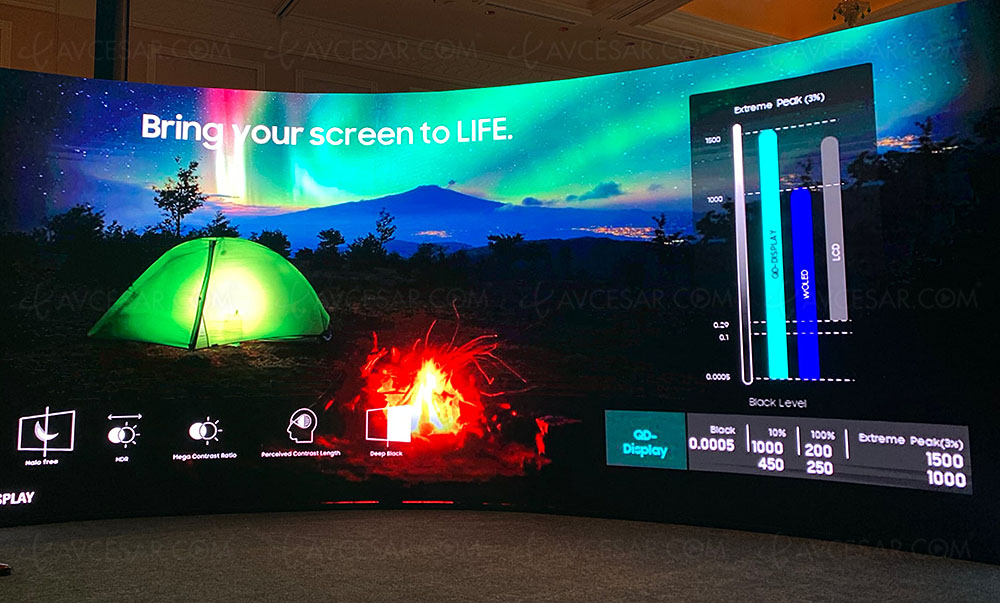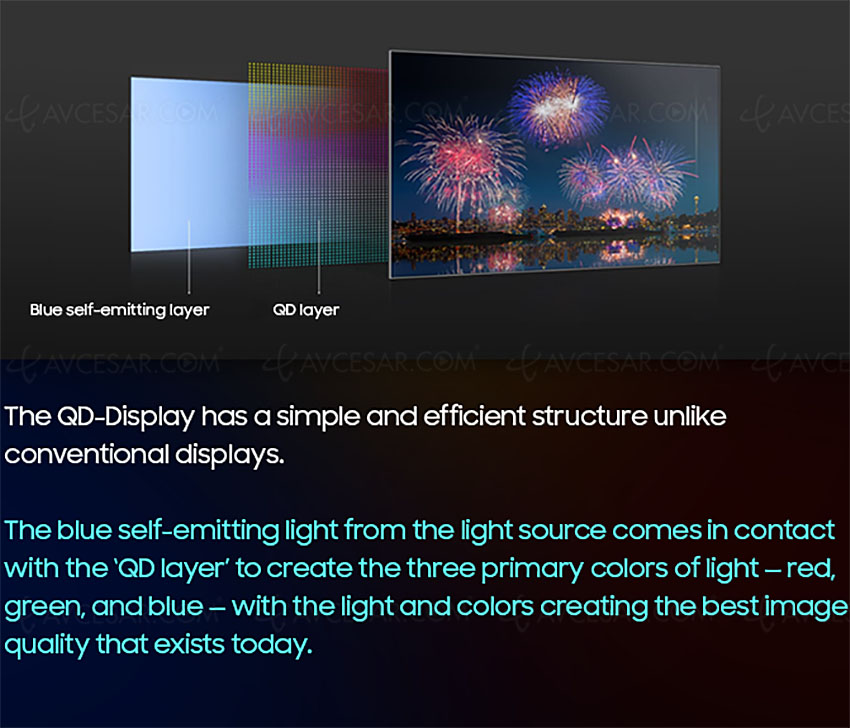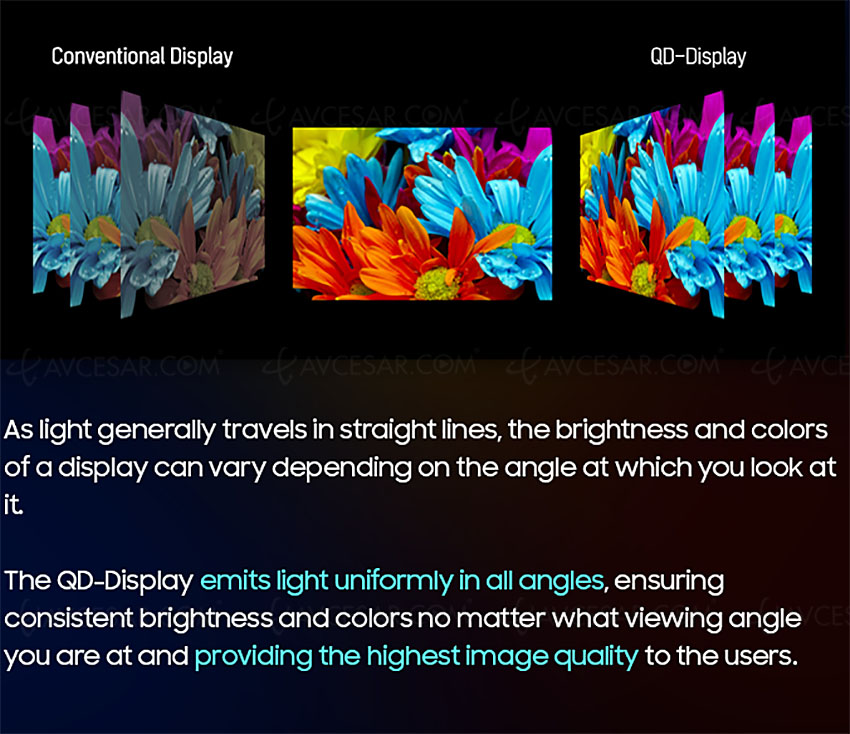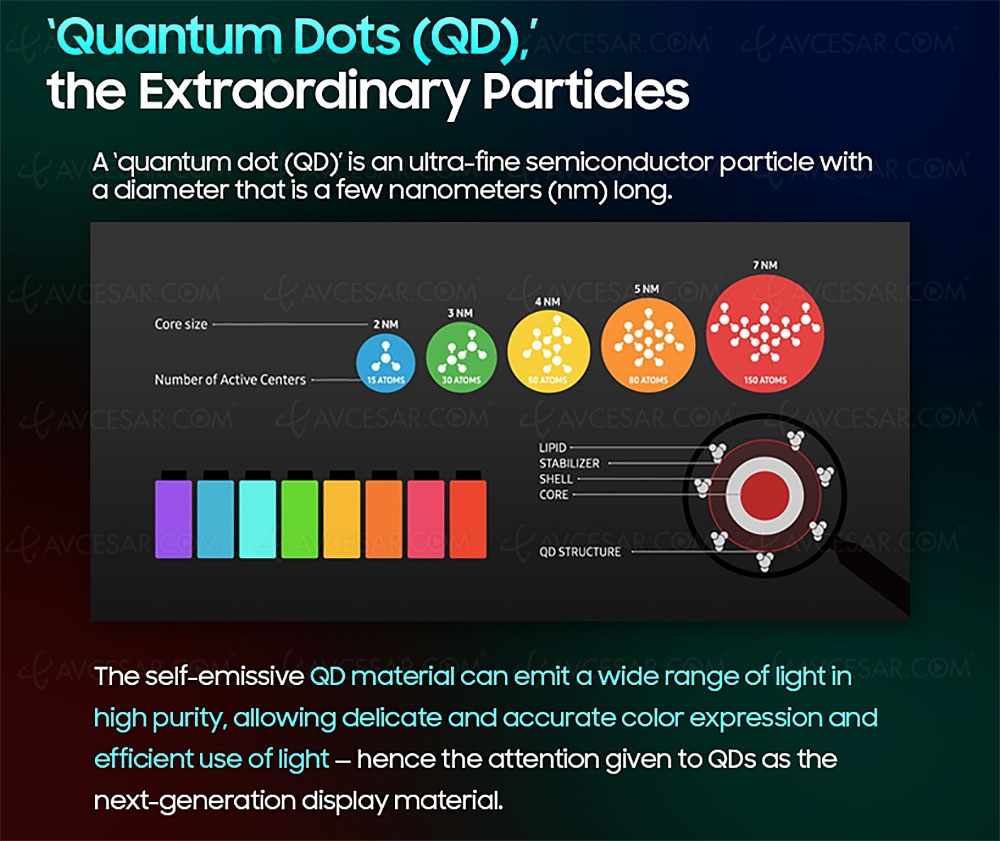Several of our colleagues have already been able to attend Samsung Display's QD Oled workshops and the least we can say is that they were all amazed by the quality of the QD Oled screens. We were able to talk to some of them face to face, or read the report of others on their site at the end of the QD Oled demonstration (see photo below signed Flatpanels HD) and their enthusiasm is unanimous. This bodes very well for Samsung QD-Display TVs (see our CES 22 news> Samsung 65 '' UHD 4K QD ‑ Display TV: QD Oled technology and already winner of a CES 2022 Best of Innovation Awards) equipped with QD Oled technology…

QD Oled panel, pure RGB colors
As a reminder, unlike the Woled (White Oled) panel produced by LG Display and equipped with color filters to recreate the RGB tints from yellow and blue diodes (and green in the case of Evo panels), embedded in the all Oled televisions available in stores for all brands), the QD Oled panel developed by Samsung Display is based on a single organic diode, a blue emitter coated in a triple layer, associated with red and green Quantum Dots color converters (cf. our news QD Oled TV panels Samsung Display under study at Panasonic and Sony). This architecture allows to generate much purer colors.

QD Oled panel, promising first figures
Through the demonstration offered by Samsung Display, via various TV panels placed next to each other, the Samsung Display engineers took live measurements of the peak light. The latter displays a little over 1000 nits on a 10% white window against around 800 nits for an Oled Evo panel (see our complete test of the LG OLED65G1 TV). This gives about 25% more brightness for the QD Oled vs Woled. According to Samsung, this light peak is expected to reach 1,500 nits for a 3% window (figure not confirmed via measurement).
Similarly, Samsung Display claims 90.3% coverage of the Rec. 2020 gamut for 55 '' and 65 '' QD OLED TV panels and 80.7% of Rec. 2020 for the 34 inch monitor panel. Obviously, these figures deserve to be confirmed but it is very promising. As a reminder, Woled LG Display panels show around 72% of Rec. 2020. And for the quality of blacks you will tell us? Equivalent to that of TV Woled.
QD Oled panel, wide viewing angle and controlled Burn-in
Another advantage of QD Oled panels, their viewing angle is significantly greater than that of Woled panels. This is due to the absence of a color filter. Without them, the light generated by the blue emitters and converted by the red and green nanocrystals is available almost entirely on the screen. But there is another essential aspect of this QD Oled structure, according to Samsung Display: the much higher energy efficiency allows a less supply of the diodes to create a lot of light, therefore less stress on the diodes, therefore a risk of marking (Bur- in) lower than with Woled panels. Here again, it will be a question of checking on the spot. But Samsung Display and, by extension, Samsung Electronics are very confident on the subject. Moreover, Samsung plans to market a QD Display (34 '', 86 cm) gaming monitor, an extremely demanding field for screens.

QD Oled panel, less reflections
Finally, QD Oled panels are from the outset much less subject to reflections, a real plague of TV Woled. Asked about the question, the representatives of the Korean firm however replied in the negative regarding the use of a special coating. Last precision, the QD Oled panels are 10 bits / 144 Hz specimens for TVs, 175 Hz for the monitor. Samsung Display that it is easy, if necessary, to display an even greater refresh.
